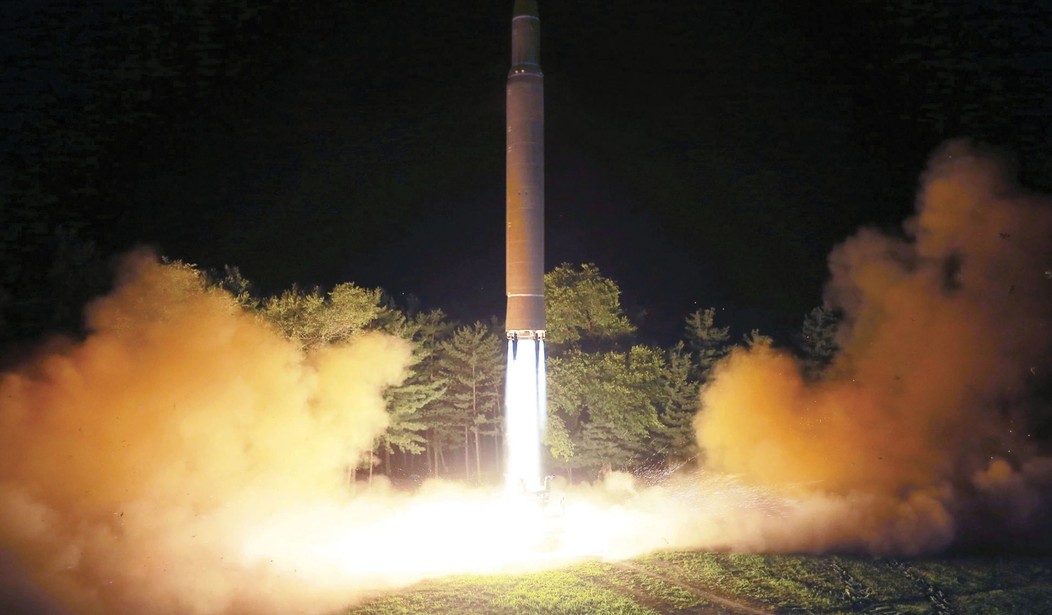Hawaii residents were rattled Saturday morning when they received text alerts to their cell phones warning of an incoming ballistic missile attack. The alert advised them to “seek immediate shelter.” The message, sent in all caps, was later determined to be a false alarm. A NORAD official is saying that the alerts may have been the result of an attack by hackers.
https://twitter.com/amandawgolden/status/952241243374862336
This was my phone when I woke up just now. I'm in Honolulu, #Hawaii and my family is on the North Shore. They were hiding in the garage. My mom and sister were crying. It was a false alarm, but betting a lot of people are shaken. @KPRC2 pic.twitter.com/m6EKxH3QqQ
— Sara Donchey (@SaraDonchey) January 13, 2018
The emergency alert, which was sent to phones at around 8:00 a.m. Pacific, sent people scrambling for shelter, unsure how to respond to a possible attack. Twitter was flooded with reports of the warning, but 15 minutes later authorities announced that it had been a false alarm.
The alert was reportedly also pushed out on TV in Hawaii, interrupting sports programming and warning: “A missile may impact on land or sea in minutes.”
Oh my. The missile launch warning also went out over television in Hawaii. False alarm. But you wouldn't know it from watching THIS. pic.twitter.com/uQnMk8IaQI
— Robert Price (@RobertPriceTV) January 13, 2018
The Hawaii Emergency Management Agency posted a terse tweet announcing that there was no incoming attack:
NO missile threat to Hawaii.
— Hawaii EMA (@Hawaii_EMA) January 13, 2018
Honolulu Mayor Kirk Caldwell also confirmed that there had been no missile launch:
The ballistic missile warning that was issued is a FALSE alarm. Repeat FALSE alarm.
— Kirk Caldwell (@MayorKirkHNL) January 13, 2018
U.S. Pacific Command tweeted that the alert had been sent “in error.”
U.S. Pacific Command has detected no ballistic missile threat to Hawaii. Earlier message was sent in error. State of Hawaii will send out a correction message as soon possible. pic.twitter.com/hqidbV0BWn
— U.S. Indo-Pacific Command (@INDOPACOM) January 13, 2018
One resident uploaded a video to Twitter saying, “I love you all, but I’m playing golf… the last thing I’m going to do.” He added, “If you’re watching this video, that means I didn’t make it because of the missile that’s coming towards Hawaii.”
My father will live and die golfing. #missile #hawaii pic.twitter.com/BT4cPvwt1O
— Alohi Gardner (@GardnerAlohi) January 13, 2018
A NORAD official told Denver 7 that he suspects that the system was either hacked or the victim of a “sick joke.”
NORAD official tells Denver7 there is "absolutely nothing going on," says this is "possibly a hack" or a "very sick joke." https://t.co/Cn7UOg7luy https://t.co/bMQNBWvWmw via @DenverChannel
— @livemapus (@livemapus) January 13, 2018
Wireless emergency alerts give officials the ability to send messages to millions of people at once, but experts have warned that the systems are vulnerable to hackers. Peter Moskowitz, writing at Wired last year, asked, “If the government can reach us at any time, who else can?” He explained, “For example, a disgruntled phone company employee playing a practical joke. Or spammers directing recipients to websites loaded with malware. Or a terrorist intent on causing mass panic (i.e., “Tsunami imminent, evacuate immediately”). Is a system that can reach us anywhere, at any time, really safe?”
Moskowitz noted that our modern alerts systems are more secure than TV and radio warnings in the past, but cautioned that “any system is hackable—and today that system sits on our bedside tables, is plugged into our ears, and is with us nearly all the time.” He added, “The federal government has spent years building an authentication system to ensure that someone can’t intercept or change an alert, or create an alert of their own.”
Meanwhile, Hawaii residents are breathing a sigh of relief that the islands are not under attack by N. Korea or any other bad actor.
This post was updated to include additional reactions to the false alarm.










Join the conversation as a VIP Member